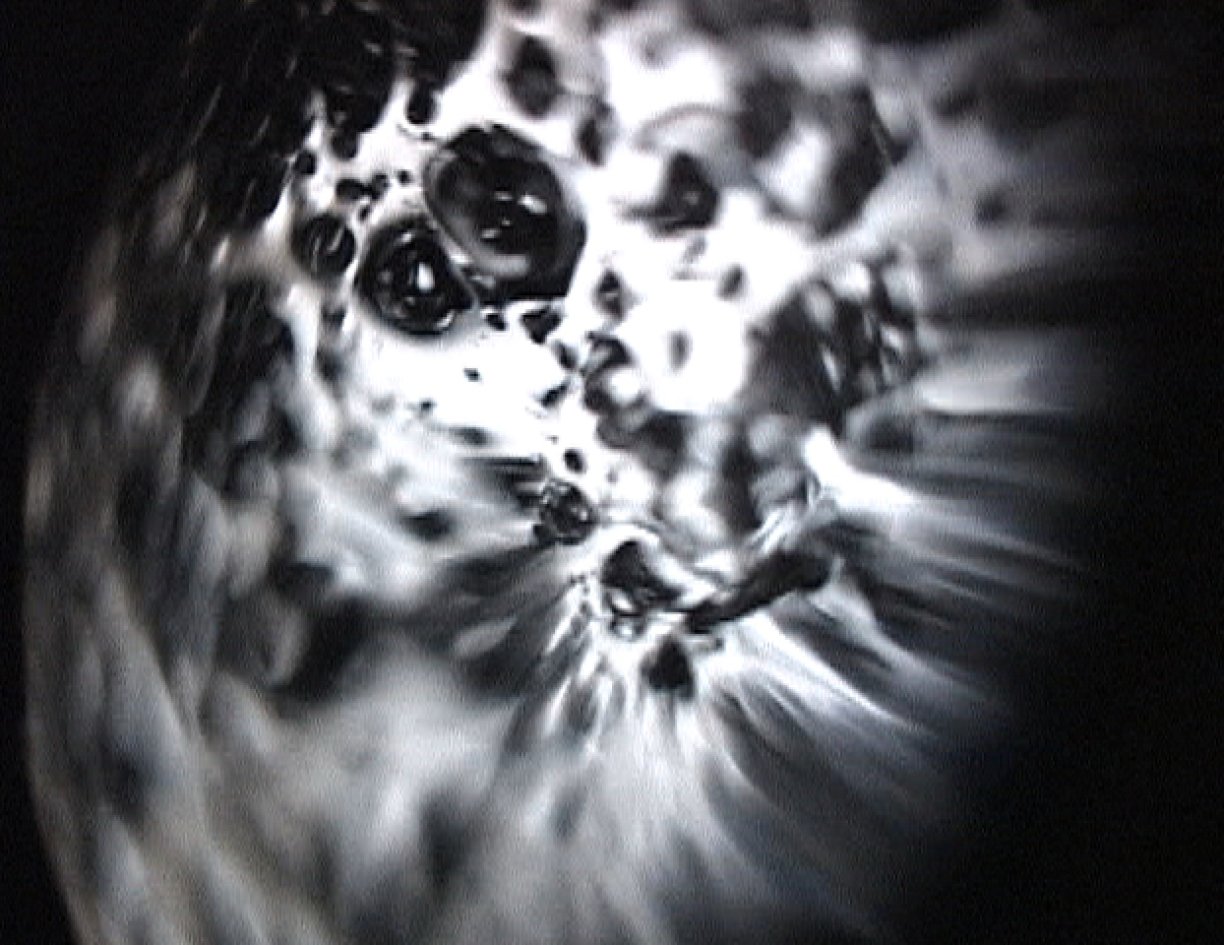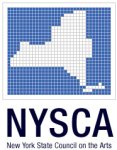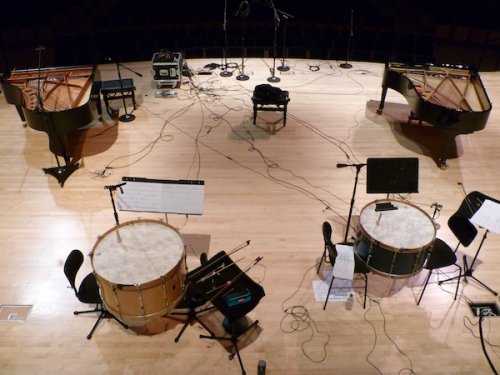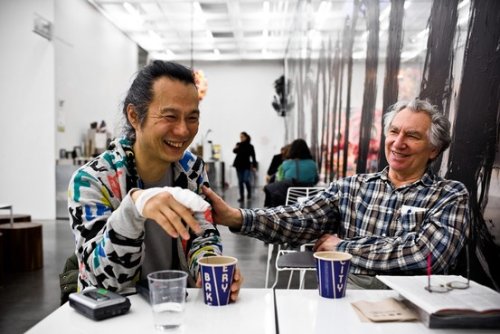Nervous Magic Lantern unravels an unexpected film before our eyes, without actors, without a plot, without celluloid or video. Through pre-cinematographic techniques, an illusory dream world is created, where the spectator is immersed in alienating, rotating landscapes, resembling volcanic glass, desolate craters or glacial gorges. The result is a hallucinatory three-dimensional watching experience, in which impossible phenomena and non-existing locations come to life in the projected dimension between the screen and the gaze of the spectator, like an innuendo of abstract shapes.
Live projections: Ken & Flo Jacobs
Sounds: Aki Onda (2012 Artist-in-Residence)
Ken Jacobs is one of the founders of the American avant-garde cinema. He has been working ceaselessly and boundlessly in film, video and moving image performance for over fifty years. Jacobs began working in a mode of guerilla cinema, shooting anarchic and exuberant– yet also politically astute– theatrics in the streets of his native New York in the early 1950s, including a number of prescient and Beat infused work – Little Stabs at Happiness, the shorts included in The Whirled– made with a very young Jack Smith. Fascinated with early cinema and experimental film from a young age, Jacobs gradually turned to found footage as a dominant inspiration, a breakthrough marked by his seminal deconstruction of cinematic narrative and illusionism Tom, Tom the Piper’s Son (1969), which famously manipulates and expands a 1905 film of the same name to create a breathless and revelatory work of pure cinema. Early “primitive” cinema, and increasingly, nineteenth century photography, has remained a touchstone in Jacobs’ work and a principal tool to launch an extended critique of the aesthetic, ideological and technological limits defining film and the cinematic apparatus itself. In the 1970s Jacobs took this critique to another level, defining what he termed “paracinema,” a radical mode of moving image performance that included his Nervous System Performances, transformative film experiences that use two simultaneous 16mm projectors and a variety of live sound and music to explore those audio-visual dimensions hidden within the film strip. Endlessly curious about technology, Jacobs embraced the possibilities of video in a meeting of the digital, early film/photography and 3-D imagery that magically bridges the nineteenth and twenty-first centuries and has given way to such powerful and sublimely beautiful works as Krypton is Doomed, and Razzle Dazzle: The Lost World.
Among Jacobs’ most important inventions is his Nervous Magic Lantern, a mysterious and mesmerizing performance of light and shadow that returns to cinema’s most essential roots, and which he evocatively describes as “cinema without film or electronics.”
Aki Onda is an electronic musician, composer, and visual artist. Onda was born in Japan and currently resides in New York. He is particularly known for his Cassette Memories project – works compiled from a “sound diary” of field-recordings collected by Onda over a span of two decades. Onda’s musical instrument of choice is the cassette Walkman. Not only does he capture field recordings with the Walkman, he also physically manipulates multiple Walkmans with electronics in his performances. In recent years, Onda often works in interdisciplinary fields and collaborates with filmmakers, choreographers and visual artists. His new Cassette Memories album, South of The Border, is due out on Important Records in November 2012. Onda has collaborated with artists such as Michael Snow, Ken Jacobs, Paul Clipson, Alan Licht, Loren Connors, MV Carbon, Akio Suzuki, Noël Akchoté, Jean-François Pauvros, Jac Berrocal, Lionel Marchetti, Linda Sharrock, and Blixa Bargeld.





